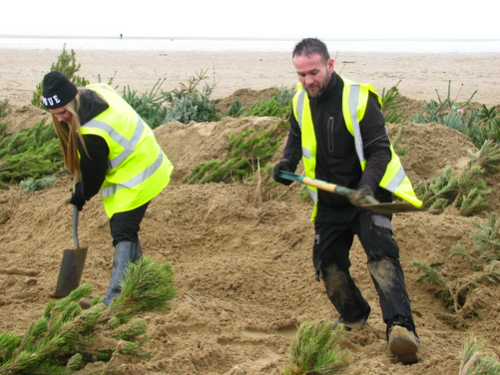School grounds and wildlife conservation
 Fourteen Year 7 students attended a workshop on conservation of habitats and species in May 2021 and took great pride in building bird boxes for our local wildlife; with the support of Murray Woodward, from BASC. Year 8 students took part in the same project the following week.
Fourteen Year 7 students attended a workshop on conservation of habitats and species in May 2021 and took great pride in building bird boxes for our local wildlife; with the support of Murray Woodward, from BASC. Year 8 students took part in the same project the following week.
Some of the newly built bird boxes have already been installed around the school grounds in quiet and inconspicuous places. In the future more conservation equipment will be installed around Blackpool Aspire Academy, including bird feeders, flower planters and outdoor cameras to observe wildlife, while also helping in educating our students about the importance of our actions with regard to local animal habitats.
Making Aspire's outdoor space wildlife friendly is a way of teaching our students to be respectful of the environment and the animals we share a space with, gaining practical experience of building and maintaining environmental equipment and by taking pride of what they are achieving in their local community.
More news regarding the project will follow.
The Fylde Sand Dunes project
 With the help of volunteers and the local community, the Fylde Sand Dunes Project works hard to make the dunes a better place for both wildlife and people.
With the help of volunteers and the local community, the Fylde Sand Dunes Project works hard to make the dunes a better place for both wildlife and people.
The Fylde sand dunes are an important feature of the coastline, covering approximately 80 hectares between Starr Gate in the North and Lytham in the South. Unfortunately over the past 150 years, more than 80% of our sand dunes have been lost. This loss is mainly due to the urban expansion of our coastal towns. However, while much depleted, the remaining dunes in Fylde make up more than 90% of Lancashire’s sand dunes, and still form the most significant part of the Borough’s coastal defence. It is therefore important that we protect and conserve this valuable asset to our coastline.
Blackpool Aspire Academy has been offered to chance to participate in the project. The first session will take place on Friday 8th July.
At this time of year (June/July/September) the students will be undertaking two main conservation tasks – creating dune slacks and planting dune grasses./p>
- Creating dune slacks involves the students using spades to dig down to the natural water table and creating a “pond” that encourages a greater diversity of wildlife on the dunes and allows species that establish in wetter conditions to thrive
- Planting dune grasses involves the students planting plugs of Marram grass into the sand. These plug plants then grow to establish greater vegetation cover on the sand dunes. Vegetation is essential on our dunes as it reduces the amount of bare sand that can be lost from the system. Vegetation roots trap and anchors sand particles in place to encourage dune growth